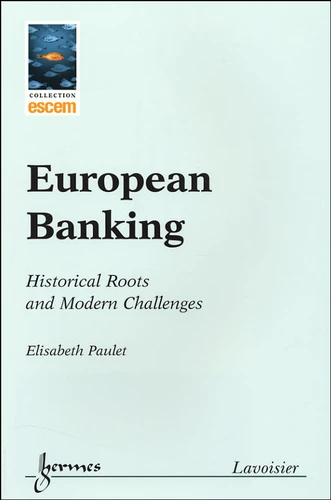European Banking. Historical Roots and Modern Challenges
Par :Formats :
- Paiement en ligne :
- Livraison à domicile ou en point Mondial Relay indisponible
- Retrait Click and Collect en magasin gratuit
- Réservation en ligne avec paiement en magasin :
- Indisponible pour réserver et payer en magasin
- Nombre de pages202
- PrésentationBroché
- Poids0.33 kg
- Dimensions15,5 cm × 24,0 cm × 1,2 cm
- ISBN2-7462-1031-2
- EAN9782746210318
- Date de parution01/02/2005
- CollectionESCEM
- ÉditeurHermes Science Publications
Résumé
During the last three decades, technological and regulatory evolutions have caused important strategic and behavioural changes in the banking sector. A analysis of the different establishments existing in European countries, both on a historical and terminological level will enable a better understanding of this new system. The introduction of the euro as the single currency in many European countries has renewed the debate on the harmonisation of the European Stock markets.
Banks and financial markets interact in the financing of projects for business. But the internationalised activities of banking companies can have destabilising effects for the system and have contributed in to the emergence of systemic risk, which will need to be controlled by the new European framework. The European Union is now composed of 25 member countries. Are the Central and Eastern European Countries following a similar trend in regard to banking integration ? What is the possible evolution of professional banking techniques ?
Banks and financial markets interact in the financing of projects for business. But the internationalised activities of banking companies can have destabilising effects for the system and have contributed in to the emergence of systemic risk, which will need to be controlled by the new European framework. The European Union is now composed of 25 member countries. Are the Central and Eastern European Countries following a similar trend in regard to banking integration ? What is the possible evolution of professional banking techniques ?
During the last three decades, technological and regulatory evolutions have caused important strategic and behavioural changes in the banking sector. A analysis of the different establishments existing in European countries, both on a historical and terminological level will enable a better understanding of this new system. The introduction of the euro as the single currency in many European countries has renewed the debate on the harmonisation of the European Stock markets.
Banks and financial markets interact in the financing of projects for business. But the internationalised activities of banking companies can have destabilising effects for the system and have contributed in to the emergence of systemic risk, which will need to be controlled by the new European framework. The European Union is now composed of 25 member countries. Are the Central and Eastern European Countries following a similar trend in regard to banking integration ? What is the possible evolution of professional banking techniques ?
Banks and financial markets interact in the financing of projects for business. But the internationalised activities of banking companies can have destabilising effects for the system and have contributed in to the emergence of systemic risk, which will need to be controlled by the new European framework. The European Union is now composed of 25 member countries. Are the Central and Eastern European Countries following a similar trend in regard to banking integration ? What is the possible evolution of professional banking techniques ?



